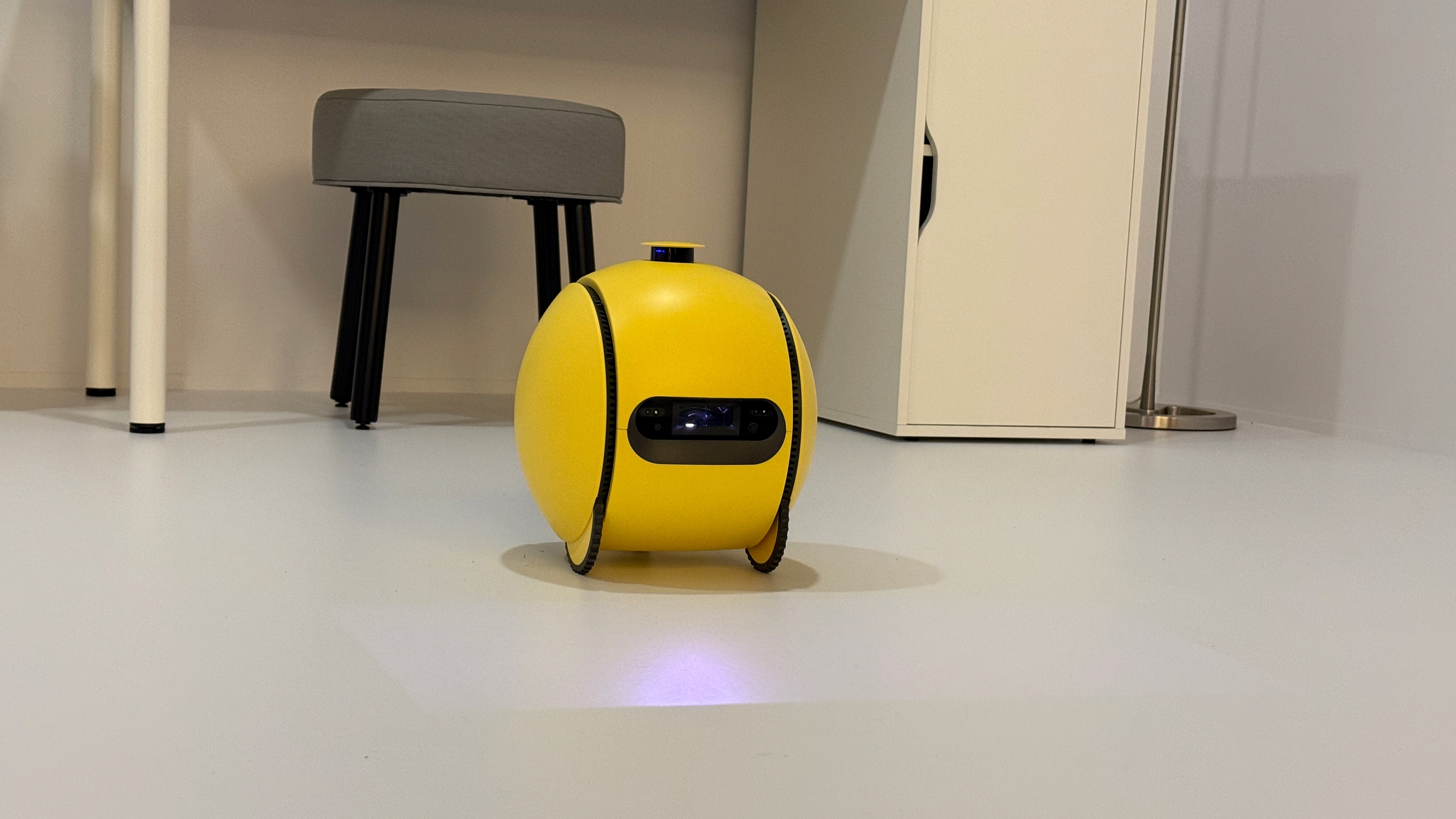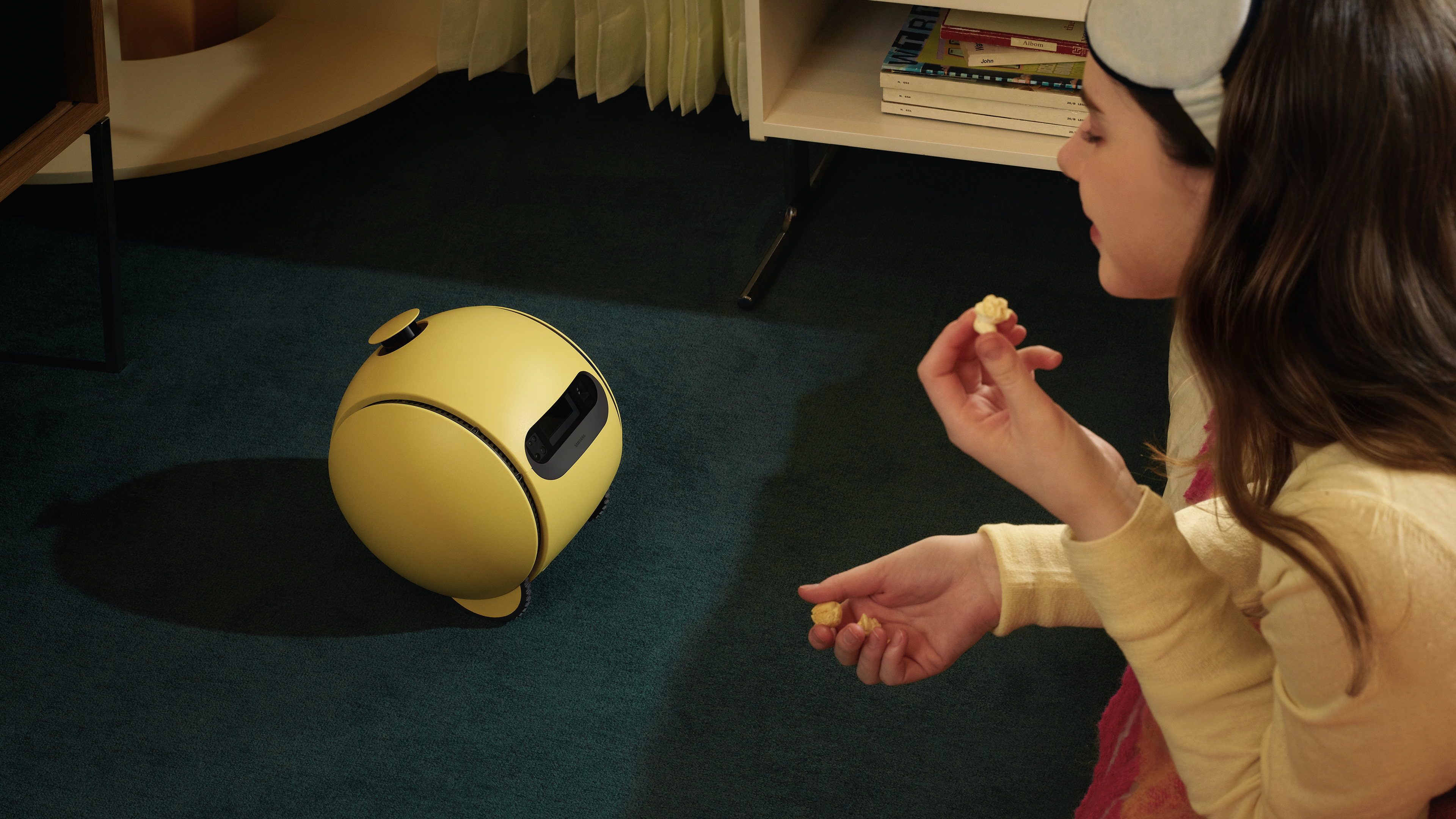Adding Google Gemini to Samsung's Ballie AI robot sounds impressive, but I'm not sure it matters
Why not just put a smartphone with the app open on a skateboard?

I’ve watched enough robot videos online to know that slapping an AI model into a hunk of hardware doesn’t automatically make it useful. I remember one clip in particular where someone had wired ChatGPT into a robot dog, and the results were mixed.
Sure, the robot could suddenly answer your questions with confidence. But asking it to open a door or pick something up was still the same clumsy creature as before. The intelligence was in the voice, not the motion.
So, when Samsung announced that its long-awaited Ballie robot would come preloaded with Google’s Gemini AI, my first thought was to wonder what exactly Gemini brings to the table that Ballie hadn’t already promised.
Gemini is capable of understanding language and images and performing complex reasoning. Ballie is supposed to be a rolling companion packed with cameras, projectors, sensors, and the ability to navigate your home. I can see why some might be eager to see what a combination of the two could do.
Samsung and Google have suggested that Ballie plus Gemini would enable the robot to suggest activities to raise your energy or give you outfit tips using its onboard camera and a Gemini-powered sense of style. But looking at it more, I'm not really sure anything the companies describe is either already something Ballie would be able to do or something Gemini can already do without needing to be connected to Ballie.
Ballie can adjust smart home devices and project videos or ambient lighting onto your walls, but does it need Gemini to do so? Gemini can answer questions, analyze photos and fashion, and organize your whole day, but does being embedded in a ball-shaped robot enhance those features much?
You may as well open Gemini on a tablet and tape it to a skateboard. Gemini gives Ballie better language understanding and smarter suggestions, but those don’t require a robot body that can roll across your living room.
Robot AI necessity

Ballie is an impressive piece of hardware. It has dual projectors, depth sensors, LiDAR, multiple microphones, and a high-end camera setup. It can follow you, return to its charger, and even record or stream footage. But all of those things were innate to the hardware.
Gemini doesn’t make Ballie project in higher resolution or roll faster. It doesn’t give Ballie arms or the ability to interact physically with objects. It just gives it better words – and while words matter, they don’t necessarily translate into a robot that’s more useful.
AI can make a chatbot smarter and mimic your tone or finish your sentences in an email. But when it comes to hardware, intelligence without capability hits a wall. If Ballie can’t do more things because it has Gemini, then it's just a more articulate version of itself. If Gemini brings a lot of useful features to Ballie that it wouldn't have had before but that Gemini couldn't do on its own, then that's a different question.
It's not that Gemini brings nothing to the table. Talking to Ballie about your schedule and getting a visual summary projected on the wall is a pleasing idea. And Gemini’s ability to integrate multi-modal inputs could make those interactions smarter. But again, the robot’s physical role in that process is still fuzzy.
There’s a reason people still get excited by videos of robots folding laundry or climbing stairs. It’s because movement and manipulating the environment are still rare and impressive feats. No matter how smart the AI becomes, if the hardware can’t meet it halfway, the result will always feel like a demo missing its payoff.
Making more conversational, more responsive, and more human in its communication is a leap for Samsung. But that leap is only meaningful if the robot itself can deliver something you couldn’t already get from a screen.
Otherwise, you may as well open Gemini in a browser tab on a tablet, duct-tape it to a Roomba, and call it a day.
You might also like
Get daily insight, inspiration and deals in your inbox
Sign up for breaking news, reviews, opinion, top tech deals, and more.

Eric Hal Schwartz is a freelance writer for TechRadar with more than 15 years of experience covering the intersection of the world and technology. For the last five years, he served as head writer for Voicebot.ai and was on the leading edge of reporting on generative AI and large language models. He's since become an expert on the products of generative AI models, such as OpenAI’s ChatGPT, Anthropic’s Claude, Google Gemini, and every other synthetic media tool. His experience runs the gamut of media, including print, digital, broadcast, and live events. Now, he's continuing to tell the stories people want and need to hear about the rapidly evolving AI space and its impact on their lives. Eric is based in New York City.
You must confirm your public display name before commenting
Please logout and then login again, you will then be prompted to enter your display name.